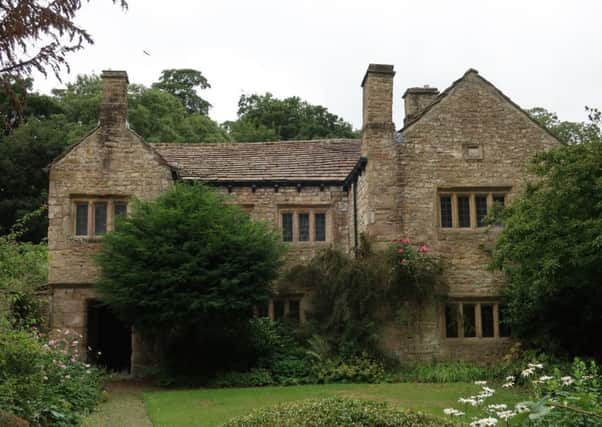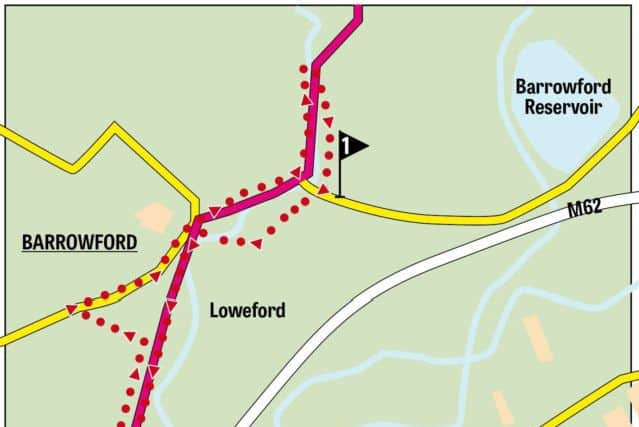Your chance to see some of the area's hidden gems


This weekend and next sees the great celebration of history and culture with Heritage Open Days which were first set up in England in 1994. As well as events in established attractions such as museums, parks and halls there are also opportunities to see places of interest which are not open to the public at other times of the year. Interested readers should refer to www.heritageopendays.org.uk for useful information about events in the North West of England.
Barrowford might be regarded as the epitome of heritage in Lancashire. Not only is it the location of the Pendle Heritage Centre but it has, within a very small area, over 30 listed buildings – that is buildings of special interest.
Advertisement
Hide AdAdvertisement
Hide AdThe village has a long history of textile production dating back to the 16th century with records of a fulling mill in operation (fulling being the process of cleansing wool). In 1780 the switch was made to cotton when the mill became powered by a water wheel using fast flowing Pendle Water.


Lancashire as a whole was recognised as an ideal place for the manufacture of cotton textiles as its damp atmosphere made cotton fibre less likely to break during the spinning process. With the advent of steam power following James Watt’s invention in 1781 cotton mills were able to exploit the region’s abundant supply of coal and were established close to the coalfields of south and east Lancashire. At its height just before World War I 8 billion yards of finished cotton was made in Britain – most of it in Lancashire. And then decline set in brought about by overseas competition - cotton could be made cheaper elsewhere. The industrial past is evident across Lancashire and there are many sites where it can be seen including Barrowford, as the walk described shows.
WALK FACTS
Start: Pendle Heritage Centre, Barrowford BB9 6JQ
Distance: 3 miles
Time: Allow a couple of hours
Grade: Easy.
Map: OS L21 The SouthPennines
DIRECTIONS
The following route is a suggestion and can be amended by the reader according to interest, time and weather. Having checked in at Pendle Heritage Centre housed in Park Hill, a two storey 17th century farmhouse, to view its exhibits, it would seem natural to step out into Barrowford Memorial Park a delightful open space dedicated to the men from the village who lost their lives in World War One. The war memorial is located to the left of the bowling green and might be considered rather understated compared to many in Lancashire consisting of a small cenotaph within a flagged patio. Pass the ornamental lake and cross to a footbridge over Pendle Water. Turn left. Walk along Gisburn Road as far as Reedyford Bridge at the southern end of the village. It is a stroll where you cannot help bumping into chunks of heritage – the fountain commemorating the coronation of George V and Queen Mary in 1911 and the rather imposing Victorian police station a little further along on the left. At the bridge where nearby modernist Nelson and Colne College faces the Junction 13 of the M65 motorway it is worth reflecting that both will become the heritage of future generations.
Retracing your steps along Gisburn Road turn left into Rushton Street to admire the façade of Barrowford Primary School built as a Board School in 1897 under the provisions of the 1870 Education Act which established a national system of elementary schools. At the end of the road take a footpath that leads up into the churchyard of old St Thomas’s Church. This has one or two interesting monuments. The church itself is a ruin following a fire in 1964 and has been replaced by newer building nearby. Turn right onto Church Street and soon after pass Lamb Working Men’s Club on a brow to the left. This is located in a 17th century manor house constructed in local stone with numerous features of note not least the mullion windows. Returning to Gisburn Road pass the White Bear public house of a similar era to Lamb Working Mens Club but altogether more imposing. Continuing north, the road passes the junction of Colne Road and Barrowford’s most obvious example of heritage the early 19th century toll house complete with its noticeboard of charges for road users.
Advertisement
Hide AdAdvertisement
Hide AdNow in Higherford there is a concentration of industrial heritage to admire. Three storey Higherford Mill sits on a bend of the road just over the bridge across Pendle Water with a cluster of weaving sheds and mill cottages behind it. Here is a reminder of Lancashire’s once booming textile industry that even a small village like Barrowford produced goods that were exported all over the world.
To return to the centre turn around and take a footpath to the left – the Pendle Way – that will provide a pleasant riverside conclusion to the walk.